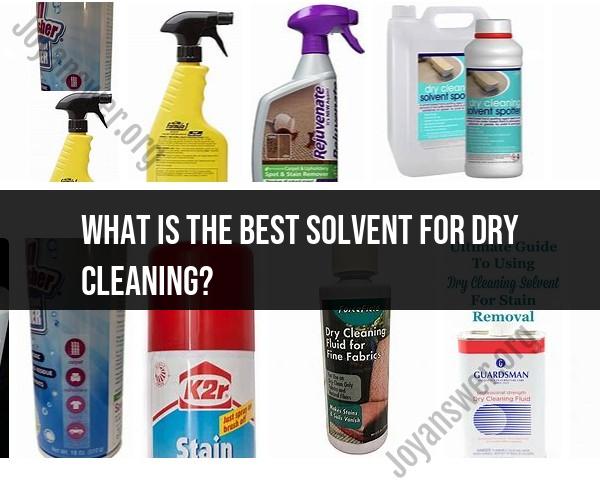What is the best solvent for dry cleaning?
Selecting the best solvent for dry cleaning involves striking a balance between cleaning effectiveness and safety for both the environment and human health. Traditional solvents like perchloroethylene (PERC) have raised environmental and health concerns, leading to a shift toward more environmentally friendly options. Here are some solvents commonly used in dry cleaning, along with their characteristics and considerations:
1. Perchloroethylene (PERC):
- Effectiveness: PERC is known for its excellent cleaning capabilities, particularly for oil-based stains and delicate fabrics.
- Environmental and Health Concerns: PERC is classified as a hazardous air pollutant (HAP) and can contaminate groundwater if not handled and disposed of properly. Prolonged exposure to PERC has been associated with health risks.
- Regulation: The use of PERC is heavily regulated in many regions due to its environmental and health concerns. Some areas have banned or phased out its use in dry cleaning.
2. Hydrocarbon-Based Solvents:
- Effectiveness: Hydrocarbon-based solvents, such as Stoddard solvent, offer good cleaning results and are less harmful than PERC.
- Environmental and Health Impact: While less toxic than PERC, hydrocarbon solvents still emit volatile organic compounds (VOCs) and require proper handling and disposal.
- Regulation: Hydrocarbon solvents are generally considered safer and are used by many dry cleaners as an alternative to PERC.
3. Green or Silicone-Based Solvents:
- Effectiveness: Green or silicone-based solvents are eco-friendly and can provide effective cleaning for a wide range of fabrics and stains.
- Environmental and Health Impact: These solvents are considered safer for the environment and human health. They do not emit harmful VOCs and are biodegradable.
- Regulation: Green dry cleaning methods are increasingly popular and may be encouraged or incentivized by local regulations.
4. Wet Cleaning:
- Effectiveness: Wet cleaning is a water-based method that can effectively clean many garments, including those labeled as "dry clean only."
- Environmental and Health Impact: Wet cleaning is considered the most environmentally friendly option because it uses water as the primary solvent and does not produce hazardous emissions.
- Regulation: Wet cleaning is a sustainable and safe alternative to traditional dry cleaning methods.
5. Liquid Carbon Dioxide (CO2) Cleaning:
- Effectiveness: Liquid CO2 cleaning is a non-toxic and effective method for cleaning delicate fabrics and removing stains.
- Environmental and Health Impact: This method is safe for the environment and human health, as it does not involve hazardous chemicals.
- Regulation: Liquid CO2 cleaning is gaining popularity as a green and sustainable option.
When choosing a dry cleaning service or considering solvent options, it's essential to inquire about the solvents and cleaning methods used by the facility. Many environmentally conscious dry cleaners have transitioned to safer and more sustainable practices. Additionally, consumers can make informed choices by seeking out dry cleaners that prioritize eco-friendly cleaning solutions while still providing effective cleaning results.










